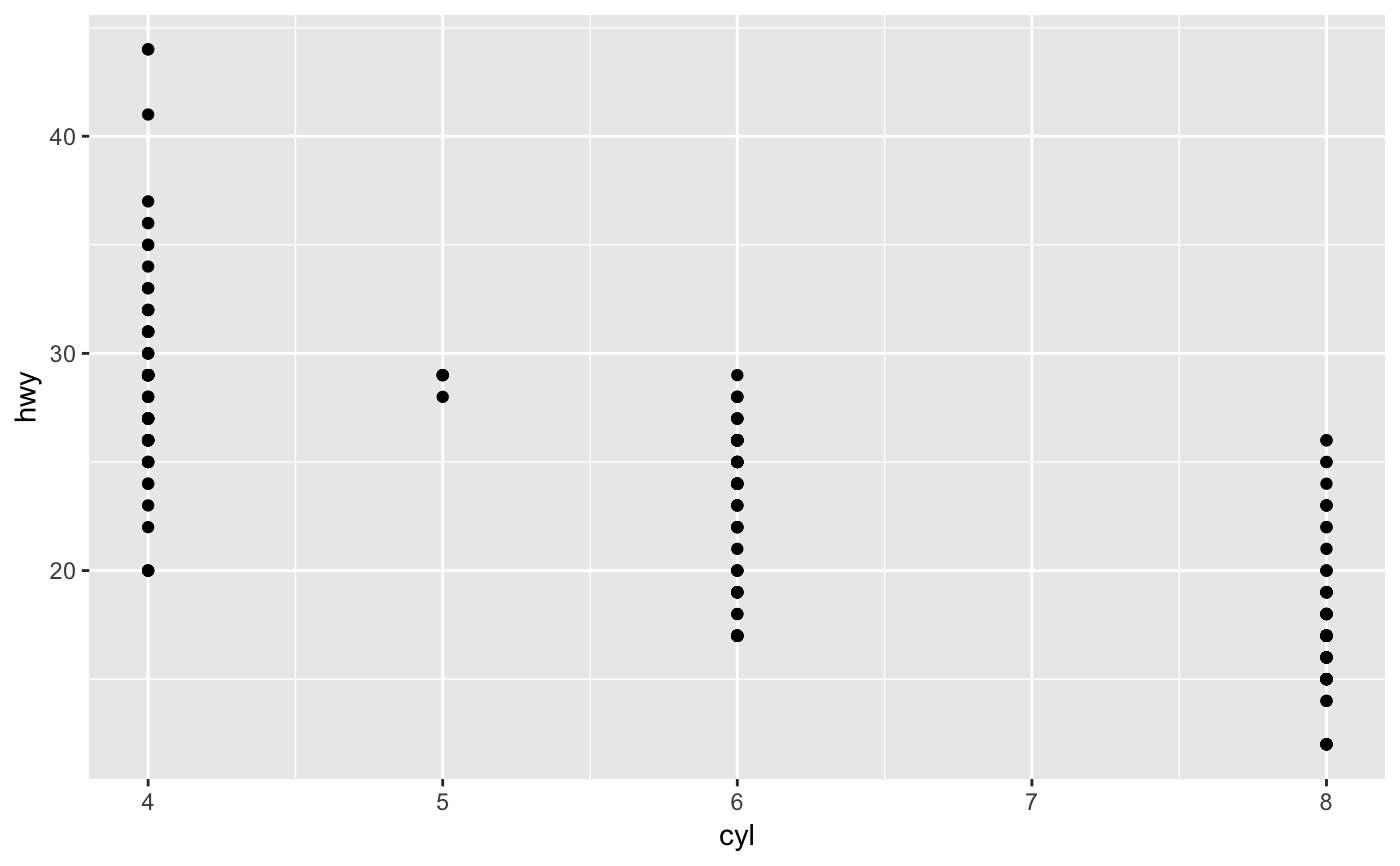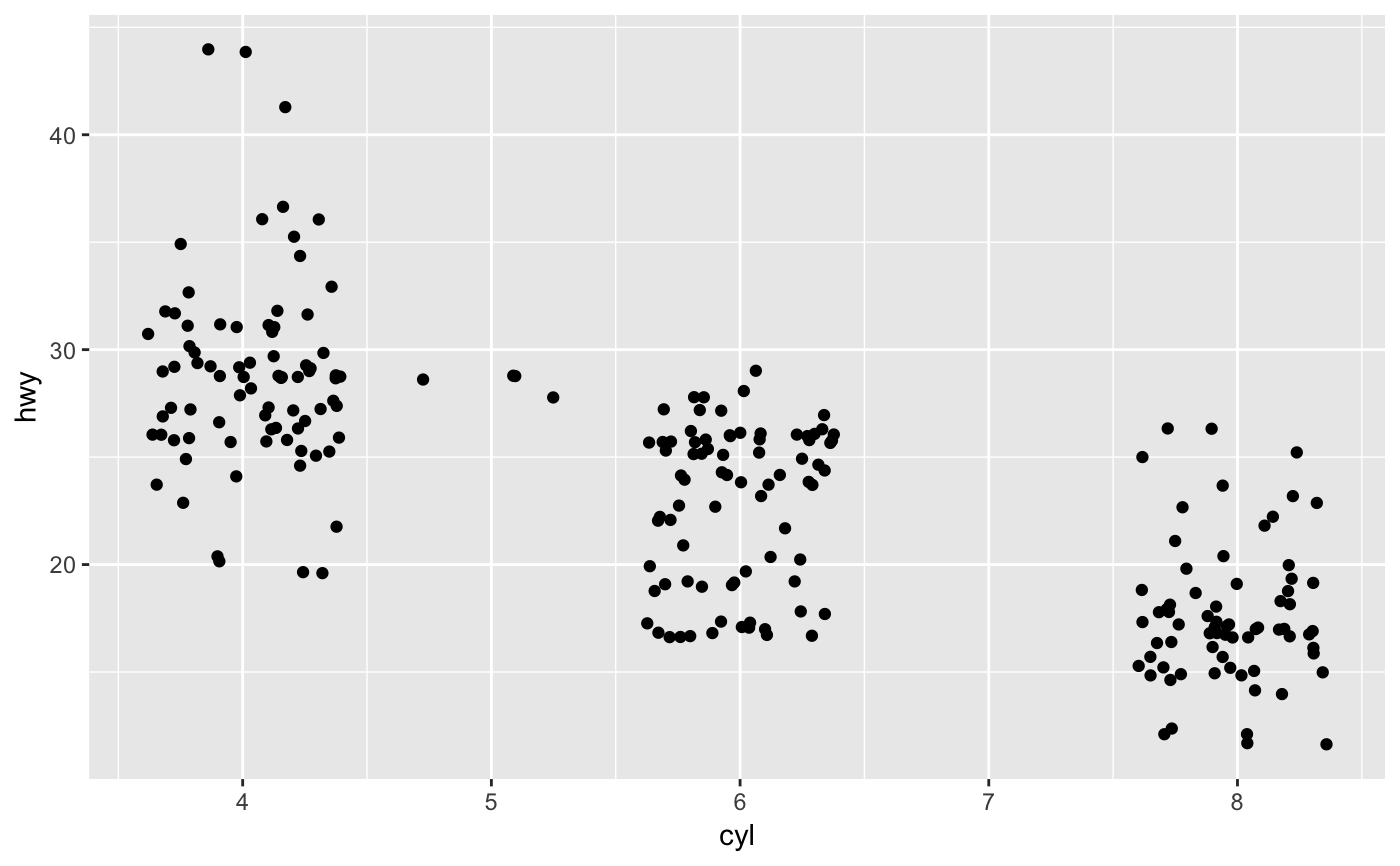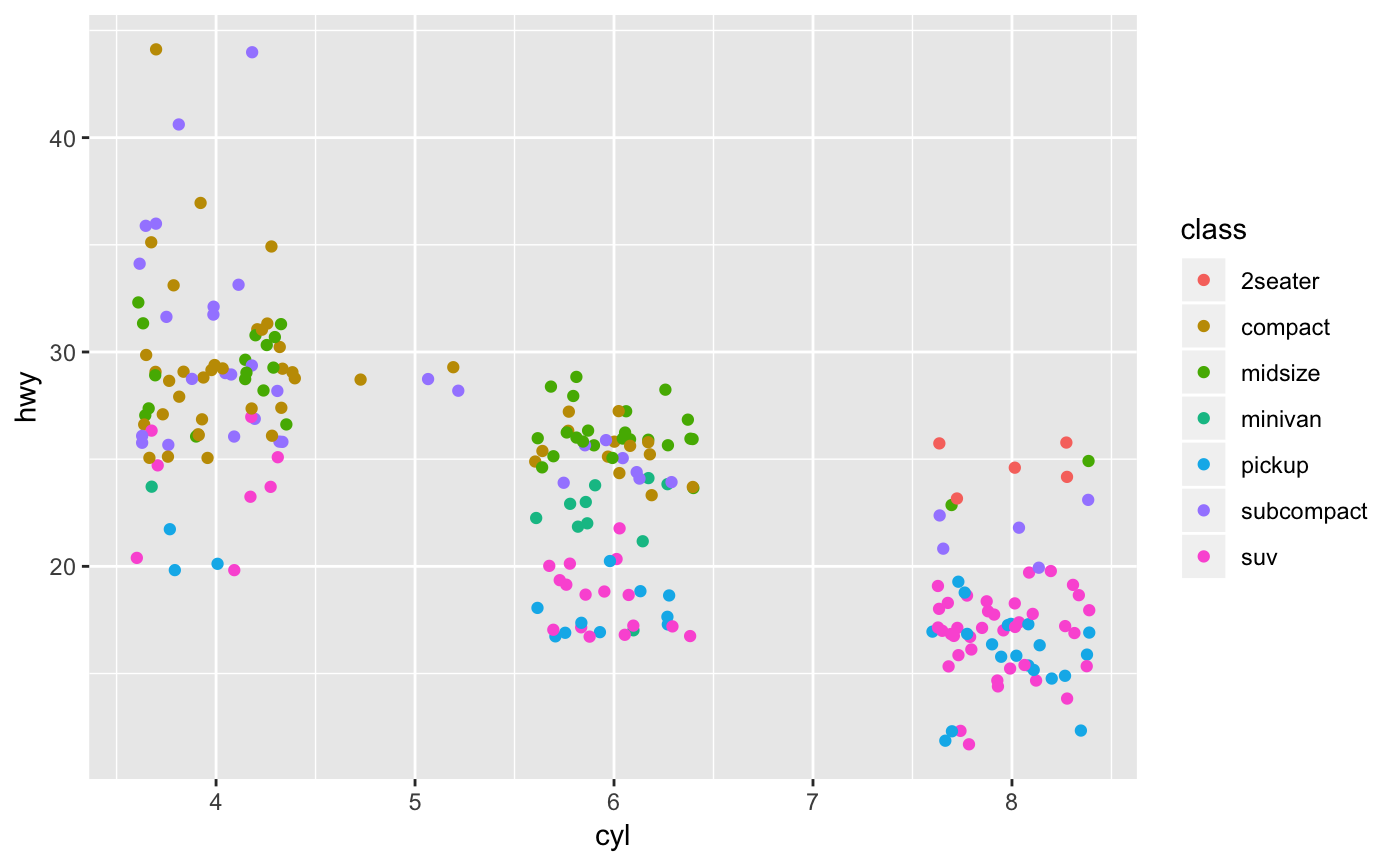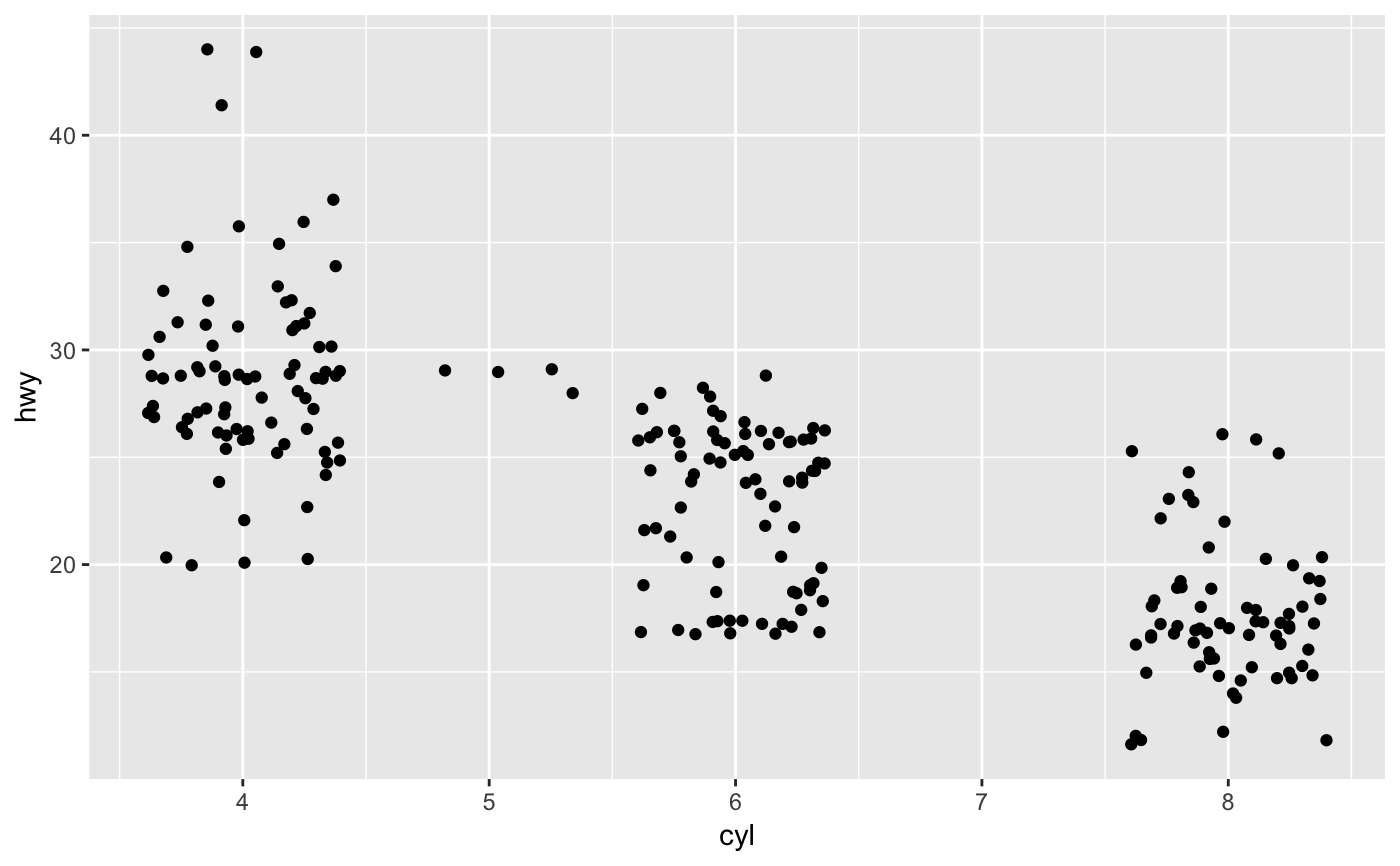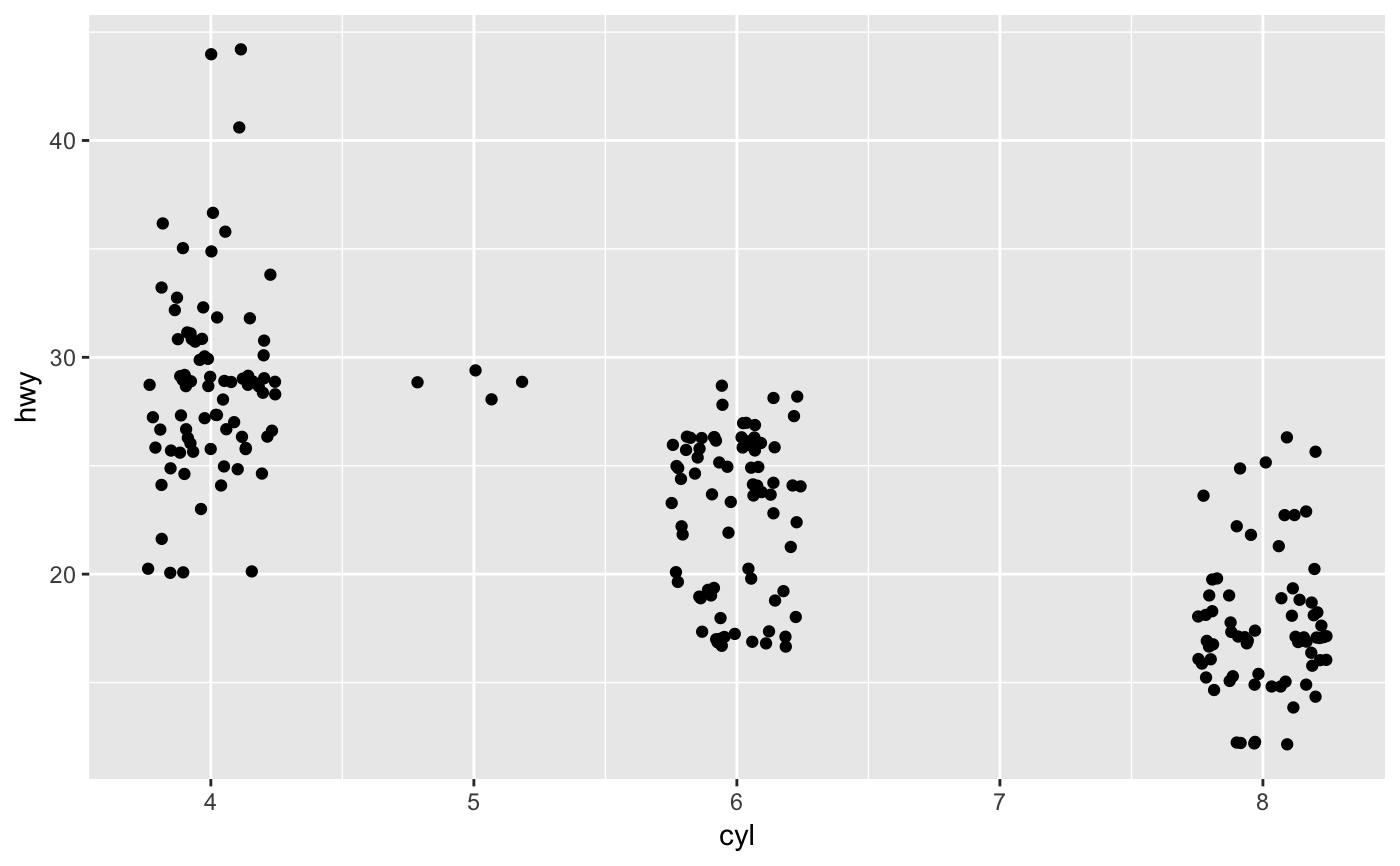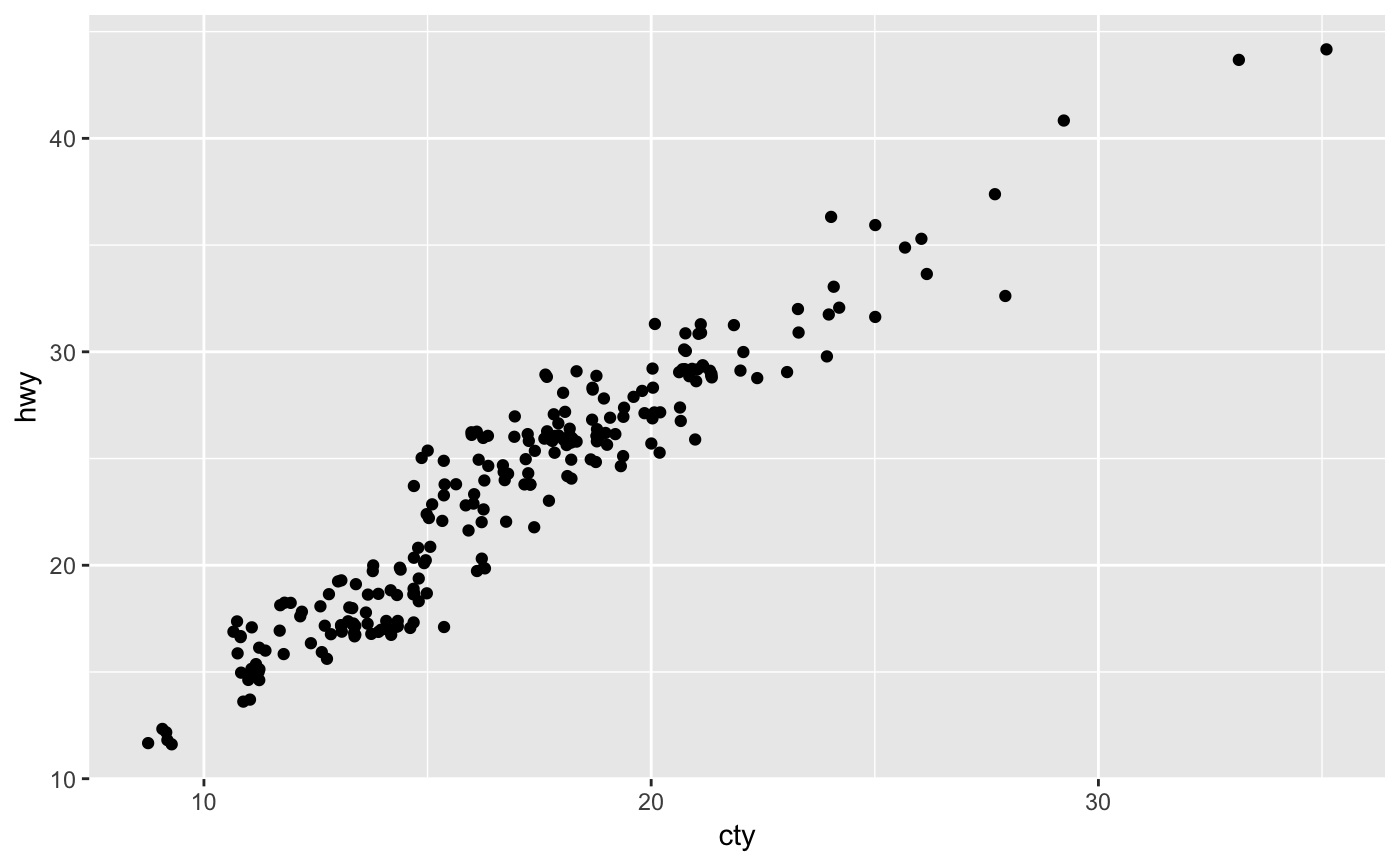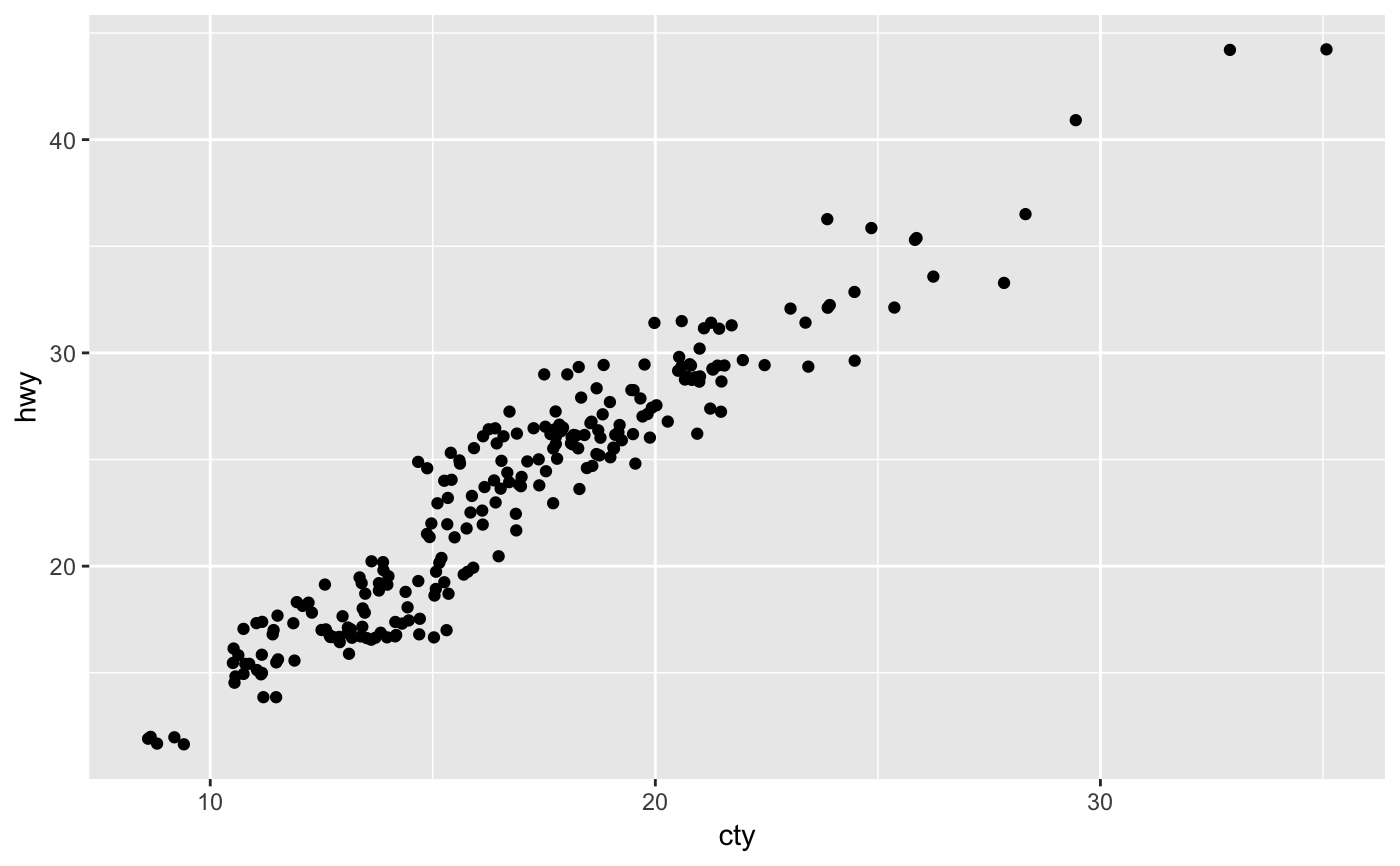The jitter geom is a convenient shortcut for
geom_point(position = "jitter"). It adds a small amount of random
variation to the location of each point, and is a useful way of handling
overplotting caused by discreteness in smaller datasets.
geom_jitter(mapping = NULL, data = NULL, stat = "identity", position = "jitter", ..., width = NULL, height = NULL, na.rm = FALSE, show.legend = NA, inherit.aes = TRUE)
Arguments
| mapping | Set of aesthetic mappings created by |
|---|---|
| data | The data to be displayed in this layer. There are three options: If A A |
| stat | The statistical transformation to use on the data for this layer, as a string. |
| position | Position adjustment, either as a string, or the result of a call to a position adjustment function. |
| ... | Other arguments passed on to |
| width | Amount of vertical and horizontal jitter. The jitter is added in both positive and negative directions, so the total spread is twice the value specified here. If omitted, defaults to 40% of the resolution of the data: this means the jitter values will occupy 80% of the implied bins. Categorical data is aligned on the integers, so a width or height of 0.5 will spread the data so it's not possible to see the distinction between the categories. |
| height | Amount of vertical and horizontal jitter. The jitter is added in both positive and negative directions, so the total spread is twice the value specified here. If omitted, defaults to 40% of the resolution of the data: this means the jitter values will occupy 80% of the implied bins. Categorical data is aligned on the integers, so a width or height of 0.5 will spread the data so it's not possible to see the distinction between the categories. |
| na.rm | If |
| show.legend | logical. Should this layer be included in the legends?
|
| inherit.aes | If |
Aesthetics
geom_point understands the following aesthetics (required aesthetics are in bold):
xyalphacolourfillgroupshapesizestroke
Learn more about setting these aesthetics in vignette("ggplot2-specs")
See also
geom_point() for regular, unjittered points,
geom_boxplot() for another way of looking at the conditional
distribution of a variable
Examples
p + geom_jitter()# Use larger width/height to completely smooth away discreteness ggplot(mpg, aes(cty, hwy)) + geom_jitter()
